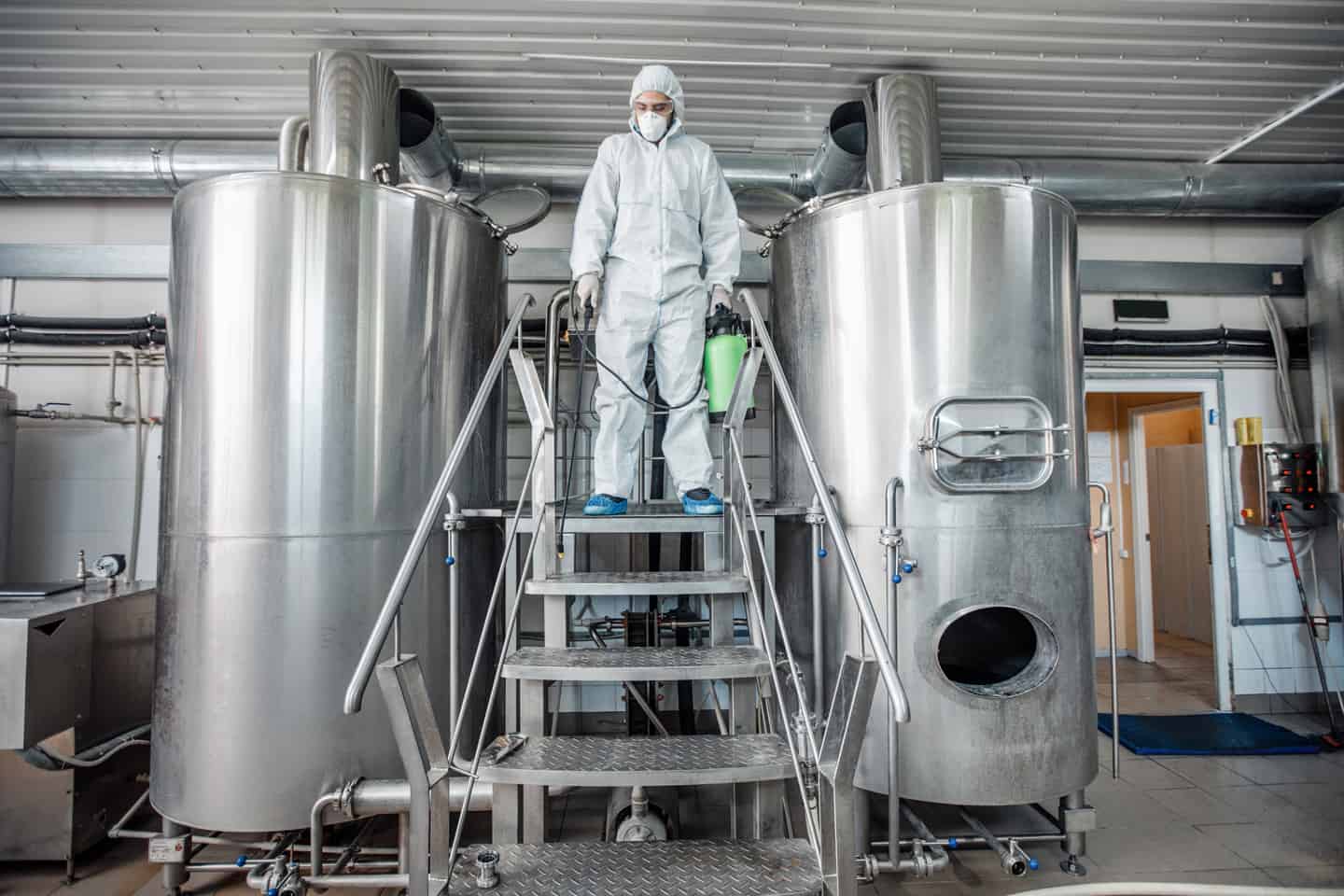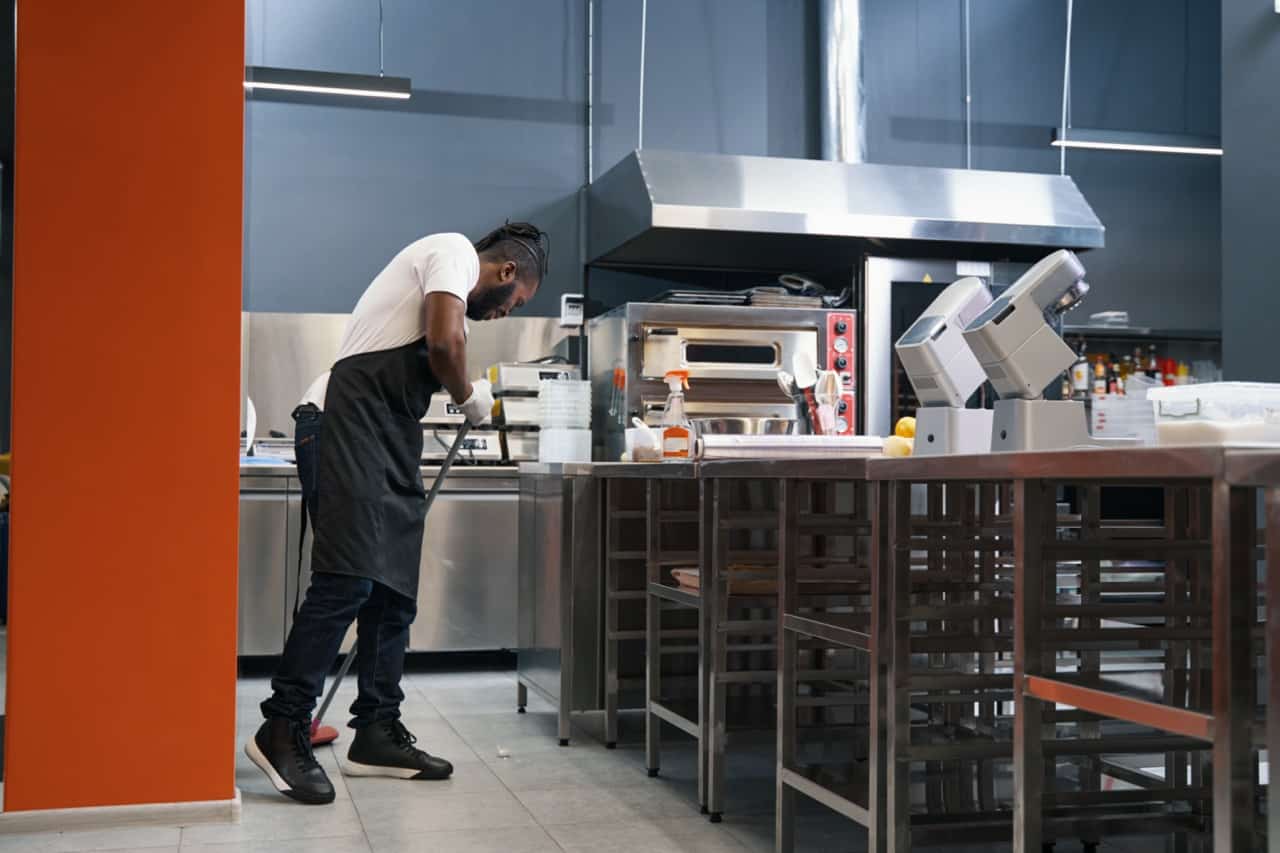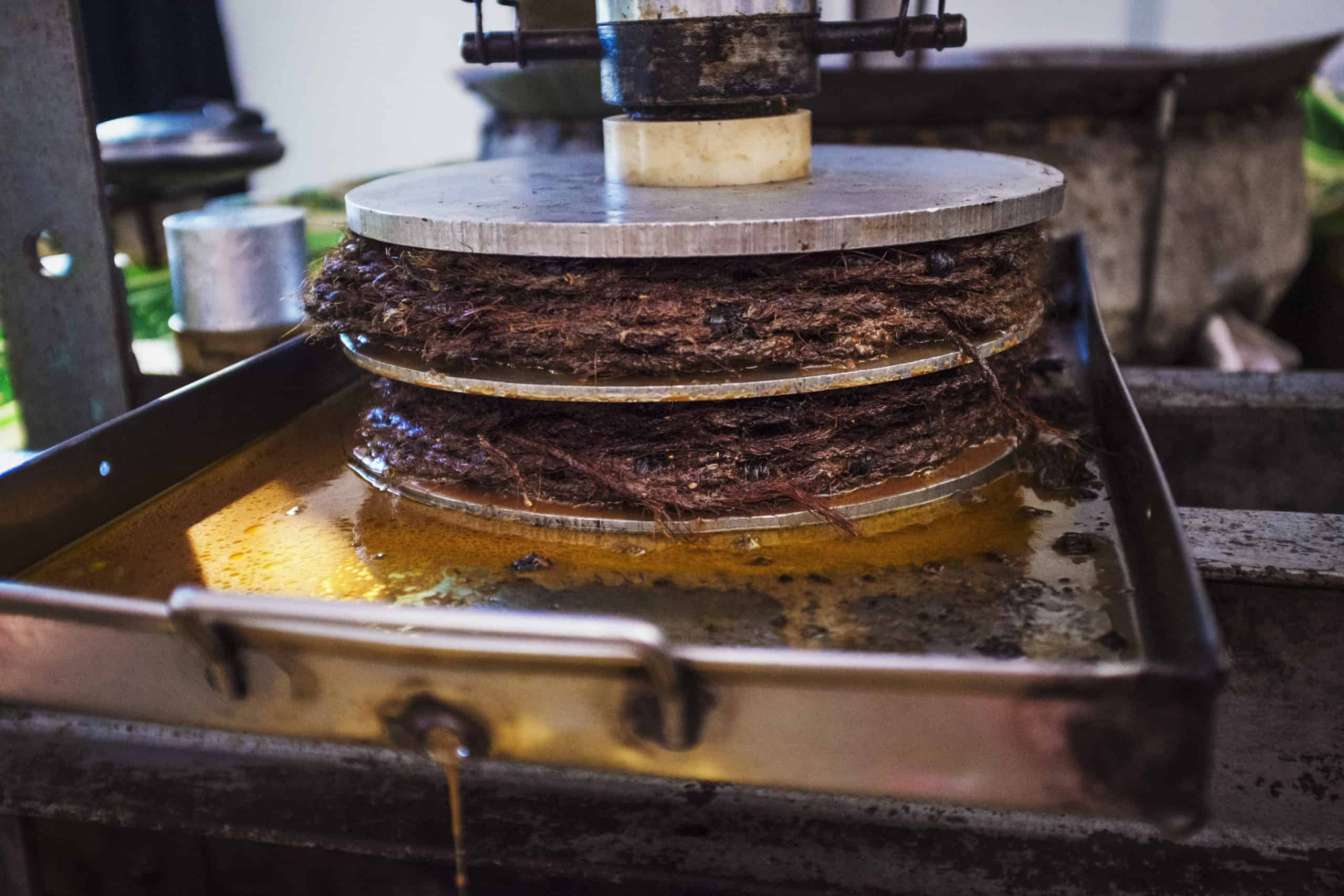[et_pb_section fb_built=”1″ _builder_version=”4.17.4″ _module_preset=”default” global_colors_info=”{}”][et_pb_row _builder_version=”4.17.4″ _module_preset=”default” width=”100%” global_colors_info=”{}”][et_pb_column type=”4_4″ _builder_version=”4.17.4″ _module_preset=”default” global_colors_info=”{}”][et_pb_text _builder_version=”4.17.4″ _module_preset=”default” header_2_font_size_tablet=”” header_2_font_size_phone=”25px” header_2_font_size_last_edited=”on|phone” global_colors_info=”{}”]
The food industry has very well defined cleaning protocols or processes.
[/et_pb_text][et_pb_text _builder_version=”4.17.4″ _module_preset=”default” text_font=”||||||||” global_colors_info=”{}”]
A sanitization program should prioritize whether it involves food contact surfaces (including handlers’ hands), sporadic contact surfaces or surfaces that never come into contact.
In addition, it has to guarantee:
- That the premises are clean at the time of starting work.
- That equipment and work utensils are clean at the start of the workday and are cleaned during use, when contaminated and at the end of production.
- That food products are not contaminated during cleaning.
- Detergents and disinfectants (or their residues) should not come into direct or indirect contact with the food and, in addition, surfaces should not be re-contaminated.
The cleaning personnel must know exactly what their function is and how to perform it optimally (handling of equipment and application of the appropriate detergents and disinfectants), as well as having specific functions assigned to them, which will be supervised by a person in charge.
It is evident that an optimal level of HYGIENE will bring numerous benefits:
- Less product loss.
- Duration of food.
- Lower occupational risk.
- better image of the company.
- Higher quality.
[/et_pb_text][et_pb_text _builder_version=”4.17.4″ _module_preset=”default” header_4_font_size_tablet=”” header_4_font_size_phone=”17px” header_4_font_size_last_edited=”on|phone” global_colors_info=”{}”]
Objectives of cleaning and disinfection:
[/et_pb_text][et_pb_text _builder_version=”4.17.4″ _module_preset=”default” global_colors_info=”{}”]Cleaning and disinfection are operations aimed at combating the proliferation and activity of microorganisms that can contaminate food and cause spoilage.
Cleaning is the absence of dirt and its purpose is to remove visible dirt, any nutrient broth that may facilitate the survival of microorganisms will be removed, eliminating the opportunity for multiplication. The population of resident microorganisms on the materials (a term known as Microbial Load) is considerably reduced.
Disinfecting, on the other hand, can be defined as eliminating in part the number of microorganisms found in a given environment or surface, so that it is not harmful to people or food. If we try to eliminate all possible bacteria, microorganisms and living forms, we are talking about sterilization.
Cleaning and disinfection programs should ensure that all parts of the facility are properly cleaned and disinfected, including cleaning equipment.
It should be consistently and effectively monitored, and when written cleaning schedules are prepared, the following should be specified: surfaces, items of equipment and utensils to be cleaned, responsibility for particular tasks, method and frequency of cleaning, and monitoring measures.
The current trend in quality control in the food industry is towards process control. This is the Hazard Analysis and Critical Control Point (HACCP), and its essential aspect is the correct practice of cleaning and disinfection.
[/et_pb_text][et_pb_text _builder_version=”4.17.4″ _module_preset=”default” custom_margin=”50px||||false|false” header_4_font_size_tablet=”” header_4_font_size_phone=”17px” header_4_font_size_last_edited=”on|phone” global_colors_info=”{}”]
Preliminary operations:
[/et_pb_text][et_pb_text _builder_version=”4.17.4″ _module_preset=”default” global_colors_info=”{}”]
Before handling any surface or food, and whenever deemed necessary, operators should wash their hands with a bactericidal product. It is convenient to dry them with single-use towels…
Personnel should always wear a hat and a clean uniform suitable for the tasks they perform. It is recommended to use a mask in case of risk of contamination or contagion.
Public administrations, such as, for example, the Generalitat de Catalunya, publish catalogs or guides describing the content of the protocol to be drawn up by companies, which can be used as a guideline when drafting it.
[/et_pb_text][et_pb_text _builder_version=”4.17.4″ _module_preset=”default” custom_margin=”50px||||false|false” header_4_font_size_tablet=”” header_4_font_size_phone=”17px” header_4_font_size_last_edited=”on|phone” global_colors_info=”{}”]
Cleaning procedures and methods:
[/et_pb_text][et_pb_text _builder_version=”4.17.4″ _module_preset=”default” text_font=”||||||||” custom_padding=”||0px|||” global_colors_info=”{}”]Cleaning can be performed using various methods, physical and chemical. Cleaning procedures will consist of:
- Remove large residues from surfaces.
- Apply a detergent solution to remove the layer of dirt and thus reduce the number of bacteria.
- Rinse with potable water to remove adhering dirt and detergent residues.
- Disinfect thoroughly if the area or equipment requires it.
[/et_pb_text][et_pb_text _builder_version=”4.17.4″ _module_preset=”default” custom_margin=”30px||||false|false” header_4_font_size_tablet=”” header_4_font_size_phone=”17px” header_4_font_size_last_edited=”on|phone” global_colors_info=”{}”]
Types of soiling:
[/et_pb_text][et_pb_text _builder_version=”4.17.4″ _module_preset=”default” text_font=”||||||||” custom_padding=”||0px|||” global_colors_info=”{}”]
Greasy soiling, non-fatty residues, calcareous incrustations and the appearance of bacterial flora are the most common ones we encounter in any area where food is treated or processed, and can give rise to contamination such as salmonella, staphylococcus, escherichia, coli and other bacteria. This problem occurs mainly in the so-called “critical points”, for some of which the appropriate cleaning operations are described below:
(It should be understood that what is described here is only a brief explanation of complex processes that vary from one industry to another).
[/et_pb_text][et_pb_text _builder_version=”4.17.4″ _module_preset=”default” global_colors_info=”{}”]
1-Surfaces, pavements and walls:
[/et_pb_text][et_pb_text _builder_version=”4.19.4″ _module_preset=”default” hover_enabled=”0″ global_colors_info=”{}” sticky_enabled=”0″]
Cleaning should be performed daily, first removing any coarse residues that can be collected with a dustpan or suitable cleaning tool, and then applying an effective detergent for the food industry. As could be the
Fadein-Deter 11
or Fadein-312-A.
[/et_pb_text][et_pb_text _builder_version=”4.17.4″ _module_preset=”default” global_colors_info=”{}”]
2-Extractor hoods, griddles, fryers and filters:
[/et_pb_text][et_pb_text _builder_version=”4.19.4″ _module_preset=”default” hover_enabled=”0″ global_colors_info=”{}” sticky_enabled=”0″]
They should be cleaned daily with a degreasing product specific for surfaces in contact with food, such as
Fadein-308-A
. Likewise, carbonized grease should be removed periodically with detergents of the Fadein-321-A type.
[/et_pb_text][et_pb_text _builder_version=”4.17.4″ _module_preset=”default” global_colors_info=”{}”]
3-Cold rooms:
[/et_pb_text][et_pb_text _builder_version=”4.19.4″ _module_preset=”default” hover_enabled=”0″ global_colors_info=”{}” sticky_enabled=”0″]
The equipment should be disconnected, as far as possible, all moving parts should be removed and cleaned with detergent such as Fadein-310-A. This product is also applied to the walls and interior of the chamber and, once it has acted, it is rinsed to remove detergent residues. It should be left to dry with the chamber doors open. Periodically, disinfection shall be carried out with a disinfectant such as
Fadein-707-V
.
[/et_pb_text][et_pb_text _builder_version=”4.17.4″ _module_preset=”default” global_colors_info=”{}”]
4- Working tools and dismountable machines:
[/et_pb_text][et_pb_text _builder_version=”4.17.4″ _module_preset=”default” global_colors_info=”{}”]
At the end of each work shift, utensils and machines must be cleaned by applying a detergent such as Fadein-310-A. It is advisable to use disinfectant in the food industry on a regular basis.
[/et_pb_text][et_pb_text _builder_version=”4.17.4″ _module_preset=”default” global_colors_info=”{}”]
5-Trash bins:
[/et_pb_text][et_pb_text _builder_version=”4.19.4″ _module_preset=”default” hover_enabled=”0″ global_colors_info=”{}” sticky_enabled=”0″]
They should be cleaned daily with detergents for the food industry such as
Deterclor
and weekly disinfection with a disinfectant such as
Fadein-707-V
.
[/et_pb_text][et_pb_text _builder_version=”4.17.4″ _module_preset=”default” custom_margin=”50px||||false|false” global_colors_info=”{}”]
The daily task guarantees efficiency in the hygiene of the establishments, although it is usual to apply a specific and customized system for each industry. R.D. 2207/1995 establishes the obligation to carry out controls in those areas that entail risks of lack of hygiene in the treatment of food, not only for the finished product, but also for all the processes involved in the production chain.
[/et_pb_text][et_pb_text _builder_version=”4.17.4″ _module_preset=”default” custom_margin=”50px||||false|false” header_4_font_size_tablet=”” header_4_font_size_phone=”17px” header_4_font_size_last_edited=”on|phone” global_colors_info=”{}”]
Pest control systems:
[/et_pb_text][et_pb_text _builder_version=”4.17.4″ _module_preset=”default” global_colors_info=”{}”]Pests pose a serious threat to food safety and suitability. Pest infestations can occur when there are places that favor proliferation and accessible food. For this reason, good hygienic practices should be adopted to avoid the formation of an environment that could lead to the appearance of pests. According to the Food and Agriculture Organization of the United Nations (FAO) in the Recommended International Code of Practice – General Principles of Food Hygiene, the likelihood of infestation can be minimized by good sanitation, inspection of incoming materials and good surveillance, thus limiting the need for pesticides.
The availability of food and water favors nesting and pest infestation. Potential food sources for these should be kept in pest-proof containers and/or stored above ground level and away from walls. Indoor and outdoor areas of food facilities should be kept clean. Where appropriate, waste should be stored in covered pest-proof containers.
Both the facility and surrounding areas should be examined periodically for possible infestations. Should this occur, they must be dealt with immediately and, of course, without prejudice to the safety or suitability of the food.
[/et_pb_text][et_pb_text _builder_version=”4.17.4″ _module_preset=”default” custom_margin=”50px||||false|false” header_4_font_size_tablet=”” header_4_font_size_phone=”17px” header_4_font_size_last_edited=”on|phone” global_colors_info=”{}”]
Waste treatment:
[/et_pb_text][et_pb_text _builder_version=”4.17.4″ _module_preset=”default” global_colors_info=”{}”]FAO also notes that appropriate measures will be taken for the removal and storage of waste. Waste should not be allowed to accumulate in food handling and storage areas or other work areas or in surrounding areas, except to the extent unavoidable for the proper operation of the facility.
Waste storage areas should be kept properly cleaned.
It should be noted that the food processing industry requires an enormous amount of water, which is used as an ingredient, a cleaning agent, for boiling and cooling, for transporting and conditioning raw materials… And precisely one of the main problems is the amount of wastewater continuously produced in the feed plants.
It is also essential to monitor the effectiveness of sanitation systems, verify them on a regular basis, either through pre-check inspections or by taking microbiological samples from the environment and food contact surfaces, and review them regularly to adapt to changing conditions.[/et_pb_text][et_pb_text _builder_version=”4.17.4″ _module_preset=”default” custom_margin=”70px||||false|false” global_colors_info=”{}”]
We hope that this article has helped you to know the different types of detergents and disinfectants used in the food industry to clean any kind of dirt. If you have any questions or suggestions for our next articles, you can write to [email protected], we will be happy to hear from you.
[/et_pb_text][/et_pb_column][/et_pb_row][/et_pb_section]





